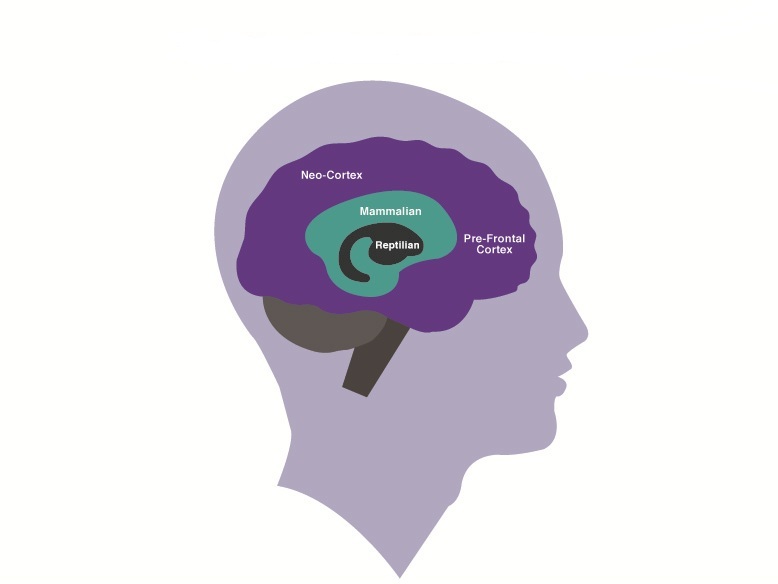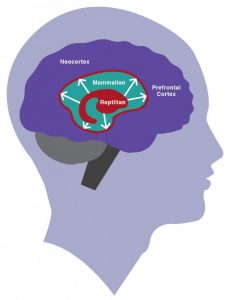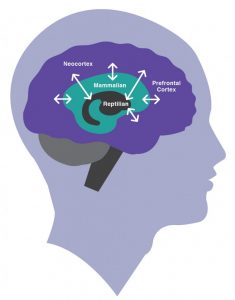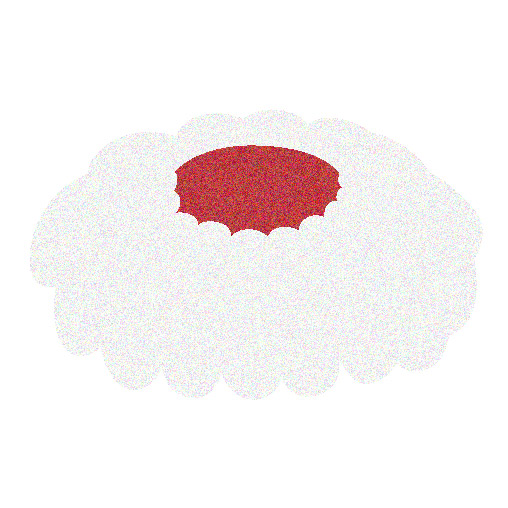You know this situation: your boss insults you and you’re standing there – FREEZE! Like a deep-frozen vegetable, instantly frozen, unable to react – you cannot even move. In your car on your way home you know what brillant response you would have wanted to say, but 6 hours later the moment is long over. Why do we get in such situations in which we feel like a total vegetable and nothing like the evolution’s elite?
First we have to take a look at how our brain is basically working. To put it simple, you can divide your bio-computer into three sections:
The reptilian brain (brainstem), the limbic system (feelings) and the neocortex (rational thinking). The reptilian brain is similar to a snake’s or crocodile’s brain and controls balance feeling, regulates temperature and our breathing automatically. We don’t have to learn these skills, our brainstem is able to do those things automatically and thus ensure that we survive.
Next section is the limbic system, also known as the emotional center for anger, frustration, love, happiness and it responds with fight/flight/freeze when danger occurs. It controls our feelings and it enables us to express them.
It forms a strong unity together with the reptilian brain and it is the brain’s oldest and most primitive part. According to Alberto Villoldo, medical anthropologist, our survival programs get activated if our nutrition contains mainly of grain products and sugar. If our mammal brain has identified a situation as safe or dangerous it runs its programm again and again, relentlessly, it doesn’t mind if the quality of our life is getting worse – survival is the ultimate priority.

The neocortex is the third section, the youngest part of the brain. To be more precise the prefrontal cortex plays the main role here. This part enables us to plan, to solve complicated tasks, to envision absctract things and to create innovative ideas. In this area experiences can be analysed and compared and the will to change them is created here. Our younger brain enables social behaviour, tool making, language and attaining higher levels of consciousness.

So, what happens here? If a similar situation occurs which our mammal brain has previously identified as dangerous it runs its survival program – no matter what. And we? We feel helpless and we wonder where our magnificent brain skills have gone. They are completely deactivated during fight/flight/freeze mode. Our brain is completely in survival mode. No wonder that we sometimes don’t recognize ourselves.

The good news is, if we are aware of these processes and know that we can actively change things we are in control and we can move our live to the direction we want it. If we take control all parts of the brain can work together in harmony and we can achieve the best result for us.
You will find my tips on how to regain control of a situation in the next blog post.
Sources:
www.forbes.com/sites/christinecomaford/2012/10/21/hijack-how-your-brain-blocks-performance
Villoldo, Alberto (2016): One Spirit Medizin

No Comments